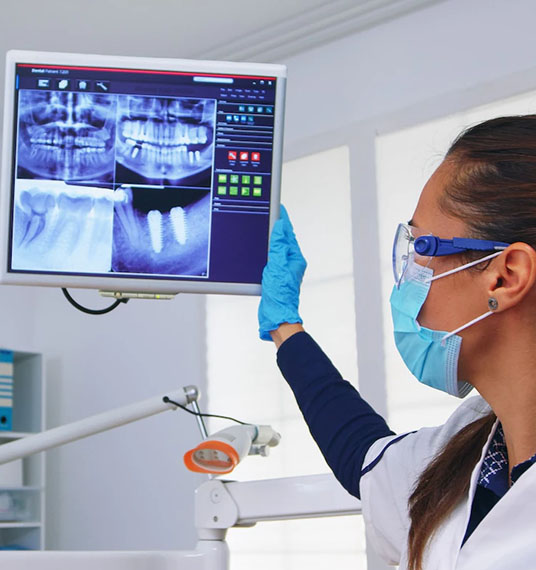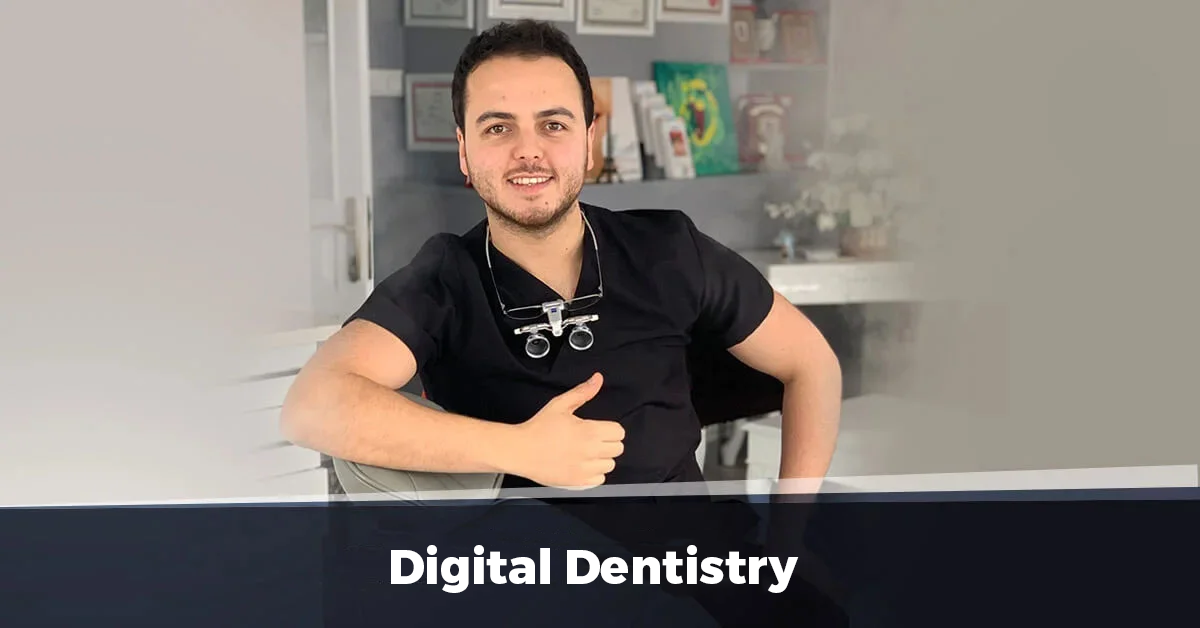Digital Dentistry , or in other words, CAD / CAM restoration systems are developing and becoming widespread. Trishape and Sirona brands are the leading brands in computer aided systems. Every day, scientific and technical advances are made and these developments are also reflected in dental applications. With these systems, measuring, scanning and appropriate restoration services with the help of computers can be performed with very practical and error-free operations. In other words, the need for old generation measurement shapes is decreasing. Digital intraoral view, panoramic and 3D imaging systems, dental units are other equipment used together with the computer. With digital medicine applications, where all procedures can be completed in one session, it is possible to complete treatments in much fewer sessions. With these systems, it is also possible to obtain a more aesthetic tooth structure close to the classical systems. It lays the groundwork for digital smile design applications.
Digital Dentistry
Technology is used effectively in every field of medicine as it is in our daily lives; The physician increases the comfort of the patient and provides very good results. In the field of dentistry, technology has helped to develop many new treatment methods. In particular, technology is a very important support for shortening the treatment time of patients and for a more efficient treatment. Technological devices have made dental treatments both easier and more comfortable.
With the CAD/CAM restoration systems CEREC, tooth design and fabrication has become faster. Device; It consists of three parts: intraoral scanner, computer unit and milling machine. With CEREC, it is possible to perform porcelain restoration in one session without the need for impression materials. The inside of the mouth is digitized with the help of a scanner, the planned restoration is designed and 3D production begins. In addition, a three-dimensional optical measurement camera is used to make porcelain crown and bridge, lamina, onlay and inlay fillings.

Advantages of Digital Dentistry
CAD/CAM applications are becoming more and more common all over the world. It has now taken its place in smile design and dental aesthetics. The biggest reason for this situation is the shortening of treatment times, as well as the ability to perform flawless operations with calculations much smaller than millimeters with the support of technology. Digital dentistry has many advantages.
- The time spent by the patient in the clinic and the number of sessions are reduced. Transactions can be completed in a single session and without rehearsal. It should not be forgotten that an aesthetic smile cannot be guaranteed by any system. However, errors are minimized, ideal technical infrastructure is created, treatment is terminated according to patient and physician directions.
- The probability of technical errors in the computer assisted treatment process is very low. The shrinkage and distortion problems of the measure have been eliminated.
- Production is made in the form designed in the computer system.
- In implant applications, the worry of patients not looking beautiful is eliminated. Without toothless appearance; With Cad /Cam systems, temporary works are made in a short time.
- Since the material is not used for measuring, some people do not experience unavoidable discomfort such as nausea. Comfortable sessions take place.
- With the help of the catalog in the device, the patient chooses the tooth design that he or she deems appropriate.
- As soon as the transactions are finished; Temporary teeth can be produced.
- Treatments are usually completed in a single session. Some treatments may require 3-4 days.

CAD/CAM Application Stages
There is a three-stage process in digital-assisted dentistry practices:
- Digital Scanning (Impression): The teeth of the patient who comes to the clinic are scanned with the help of a 3D scanner, and a virtual image of the mouth and tooth structure is created.
- Digital Design: Tooth design is made through a 3D virtual image. Design; The shape of the tooth, its contours, the harmony between the gingiva and the tooth are made in computer environment.
- Digital Tooth Production: After the design work is completed, the production phase is started. Tooth production is carried out by means of 3D printers.
Porcelain Teeth: Designed and produced teeth are produced, applied to the patient and final controls are made.
One of the aesthetic dentistry applications; Zirconium veneers, Full ceramic, Emax , Empress veneers, Laminate Veneer (Leaf Porcelain) production can be achieved with these systems. It forms the basis of Digital Smile Design. The system consists of an intraoral scanner and a scraper that can process and produce the data to be obtained. All these parts can be found in a clinic or used by purchasing services.

